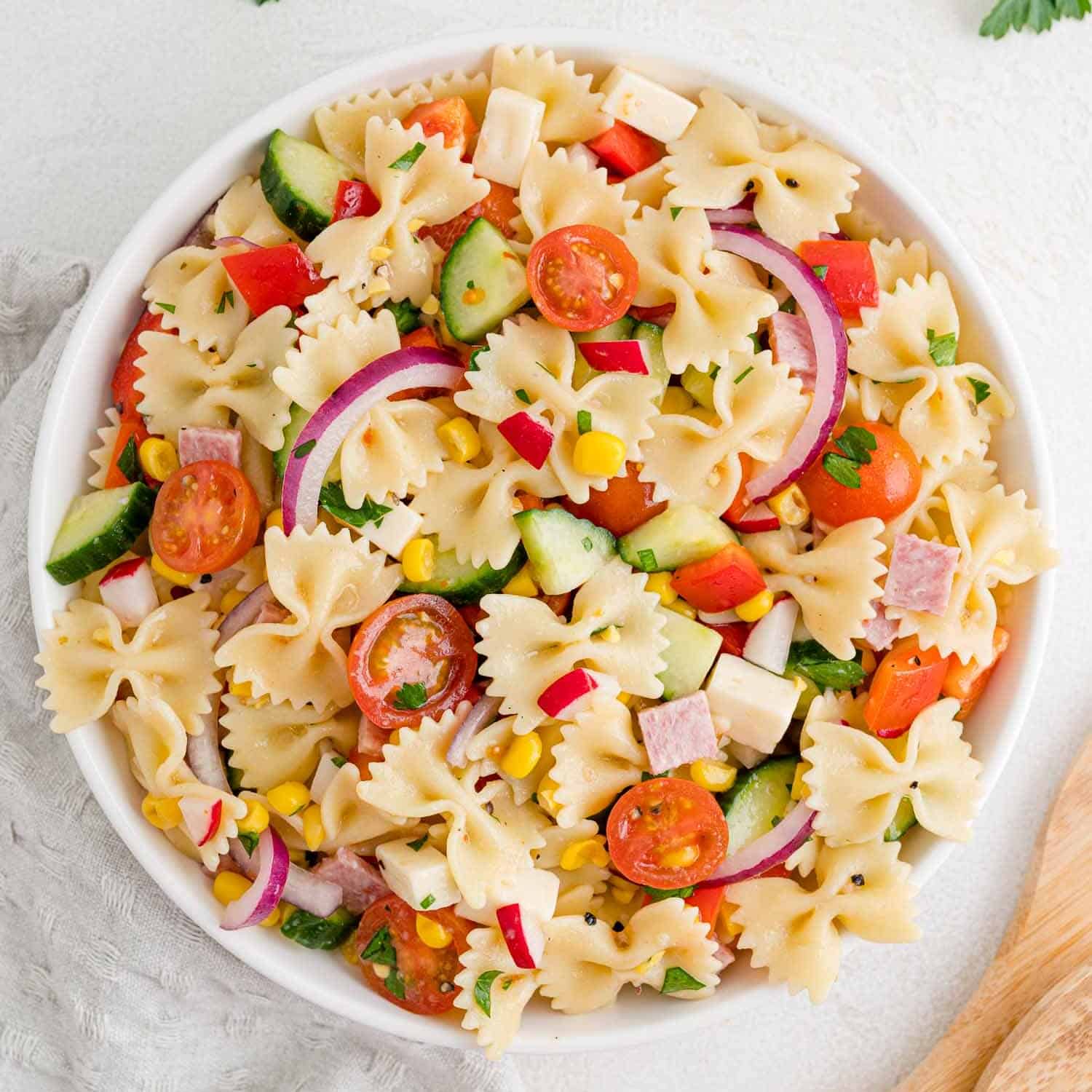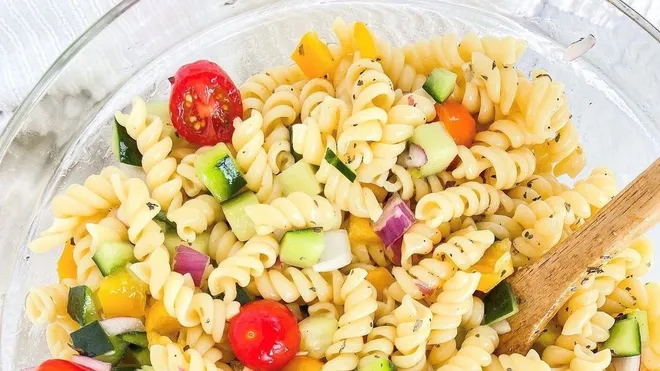Pasta salad is a beloved summer staple, frequently found at picnics and poolside parties. Its popularity is due to several factors: it’s cost-effective, flavorful, and can be served cold, making it perfect for warm days. “Pasta salad can be made ahead of time and served right out of the refrigerator, making it ideal for picnics and barbecues,” says LeeAnn Weintraub, a registered dietitian and nutrition consultant based in Los Angeles.

The Allure of Pasta Salad
This versatile dish, known in Italian as pasta fredda or Insalata di pasta, typically features tri-colored spiral pasta as its base. It often includes a variety of fresh vegetables such as diced peppers, black olives, red onions, cucumbers, cherry tomatoes, and broccoli. Additional ingredients like dried cranberries, zucchini, peas, mandarin oranges, cheese, grapes, asparagus, and various nuts can also be included. Some people prefer to add proteins like chicken or shrimp. “I also add in sundried tomatoes, fresh herbs, and spinach to my pasta salad,” Weintraub notes. The ingredients are usually mixed with a vinaigrette, Italian-style dressing, or mayonnaise.
Nutritional Insights: Healthy or Not?
The healthiness of pasta salad largely depends on its ingredients. “Pasta salad can be nutritious, depending on its ingredients,” explains Amy Goodson, a nutritionist and registered dietitian at The Sports Nutrition Playbook. The vegetables in pasta salad offer vitamins, minerals, and antioxidants, which can reduce disease risk and protect cells from damage. Olive oil-based dressings are a good source of healthy monounsaturated fats, which benefit heart health.
Caroline Susie, a registered dietitian and spokesperson for the Academy of Nutrition and Dietetics, emphasizes the health benefits of vegetables and whole-grain pasta. Whole-grain pasta provides manganese, selenium, phosphorus, and dietary fiber, which are linked to a lower risk of heart disease, colorectal cancer, diabetes, and obesity, and help maintain steady blood sugar levels.
However, some pasta salad ingredients can be less healthy. “High-calorie ingredients like mayo, cheese, oil, and creamy dressings can make the dish unnecessarily high in fat and calories,” warns Weintraub. For example, a tablespoon of olive oil contains 124 calories, and half a cup of mayonnaise has about 750 calories. Refined pasta made from white flour can cause spikes in blood sugar.
Tips for a Healthier Pasta Salad
Improving the nutritional value of pasta salad can make it a more frequent and guilt-free dish. Goodson suggests replacing oil, mayo, or creamy dressings with vinegar or homemade dressings made with Greek yogurt or pureed cottage cheese to boost protein and reduce saturated fat. Adding beans, chickpeas, or grilled meats like chicken or shrimp can also increase the protein content, helping to keep you fuller for longer.
Food safety is crucial when serving pasta salad. Susie advises keeping it at a temperature between 32 and 40 degrees Fahrenheit and not leaving it out of refrigeration for more than two hours indoors, or one hour in a hot outdoor environment, to prevent harmful bacterial growth and food poisoning. Weintraub adds, “Let pasta salad chill in the refrigerator until serving or keep the dish on ice during hot summer weather.”
